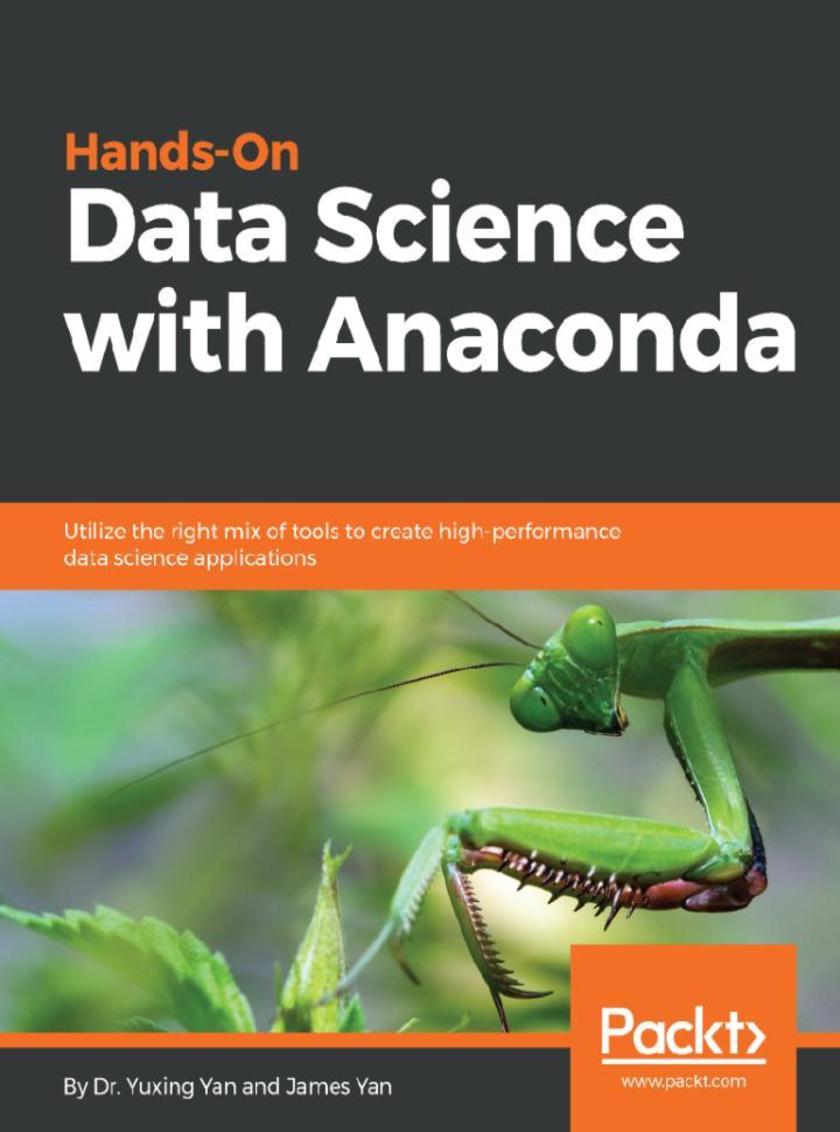
Hands-On Data Science with Anaconda
¥63.21
Develop, deploy, and streamline your data science projects with the most popular end-to-end platform, Anaconda About This Book ? Use Anaconda to find solutions for clustering, classification, and linear regression ? Analyze your data efficiently with the most powerful data science stack ? Use the Anaconda cloud to store, share, and discover projects and libraries Who This Book Is For Hands-On Data Science with Anaconda is for you if you are a developer who is looking for the best tools in the market to perform data science. It’s also ideal for data analysts and data science professionals who want to improve the efficiency of their data science applications by using the best libraries in multiple languages. Basic programming knowledge with R or Python and introductory knowledge of linear algebra is expected. What You Will Learn ? Perform cleaning, sorting, classification, clustering, regression, and dataset modeling using Anaconda ? Use the package manager conda and discover, install, and use functionally efficient and scalable packages ? Get comfortable with heterogeneous data exploration using multiple languages within a project ? Perform distributed computing and use Anaconda Accelerate to optimize computational powers ? Discover and share packages, notebooks, and environments, and use shared project drives on Anaconda Cloud ? Tackle advanced data prediction problems In Detail Anaconda is an open source platform that brings together the best tools for data science professionals with more than 100 popular packages supporting Python, Scala, and R languages. Hands-On Data Science with Anaconda gets you started with Anaconda and demonstrates how you can use it to perform data science operations in the real world. The book begins with setting up the environment for Anaconda platform in order to make it accessible for tools and frameworks such as Jupyter, pandas, matplotlib, Python, R, Julia, and more. You’ll walk through package manager Conda, through which you can automatically manage all packages including cross-language dependencies, and work across Linux, macOS, and Windows. You’ll explore all the essentials of data science and linear algebra to perform data science tasks using packages such as SciPy, contrastive, scikit-learn, Rattle, and Rmixmod. Once you’re accustomed to all this, you’ll start with operations in data science such as cleaning, sorting, and data classification. You’ll move on to learning how to perform tasks such as clustering, regression, prediction, and building machine learning models and optimizing them. In addition to this, you’ll learn how to visualize data using the packages available for Julia, Python, and R. Style and approach This book is your step-by-step guide full of use cases, examples and illustrations to get you well-versed with the concepts of Anaconda.
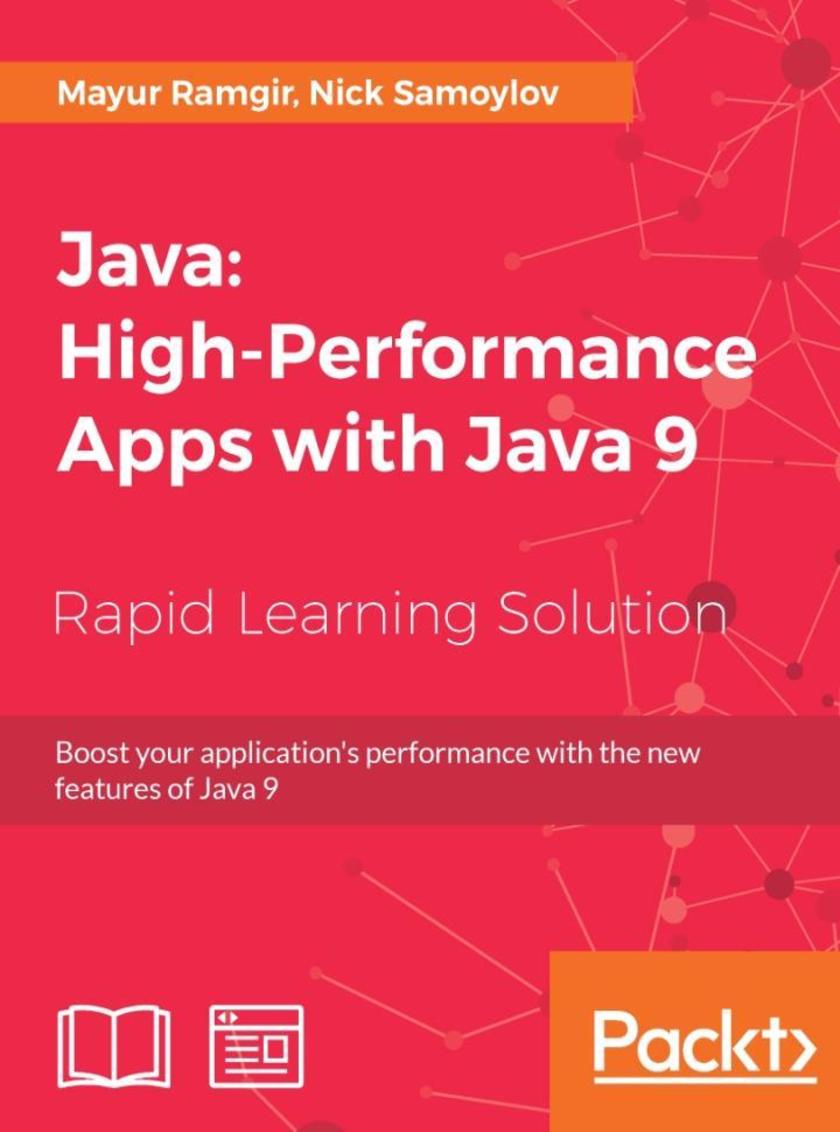
Java: High-Performance Apps with Java 9
¥73.02
Optimize the powerful techniques of Java 9 to boost your application's performance About This Book ? Tackle all kinds of performance-related issues and streamline your development ? Dive into the new features of Java 9 ? Implement highly efficient and reliable codes with the help of new APIs of Java ? Embedded with assessments that will help you revise the concepts you have learned in this book Who This Book Is For This book is targeted at developers who would like to build reliable and high-performance applications with Java. What You Will Learn ? Familiarize with modular development and its impact on performance ? Learn various string-related performance improvements, including compact string and modify string concatenation ? Explore various underlying compiler improvements, such as tiered attribution and Ahead-of-Time (AOT) compilation ? Learn security manager improvements ? Understand enhancements in graphics rasterizers ? Use of command-line tools to speed up application development ? Learn how to implement multithreading and reactive programming ? Build microservices in Java 9 ? Implement APIs to improve application code In Detail Java 9 which is one of the most popular application development languages. The latest released version Java 9 comes with a host of new features and new APIs with lots of ready to use components to build efficient and scalable applications. Streams, parallel and asynchronous processing, multithreading, JSON support, reactive programming, and microservices comprise the hallmark of modern programming and are now fully integrated into the JDK. This book focuses on providing quick, practical solutions to enhance your application's performance. You will explore the new features, APIs, and various tools added in Java 9 that help to speed up the development process. You will learn about jshell, Ahead-of-Time (AOT) compilation, and the basic threads related topics including sizing and synchronization. You will also explore various strategies for building microservices including container-less, self-contained, and in-container. This book is ideal for developers who would like to build reliable and high-performance applications with Java. This book is embedded with useful assessments that will help you revise the concepts you have learned in this book. Style and approach This book is a fast-paced guide that provides practical solutions to enhance your application’s performance. Note: This book is a blend of text and quizzes, all packaged up keeping your journey in mind. It includes content from the following Packt product: ? Java 9 High Performance by Mayur Ramgir and Nick Samoylov
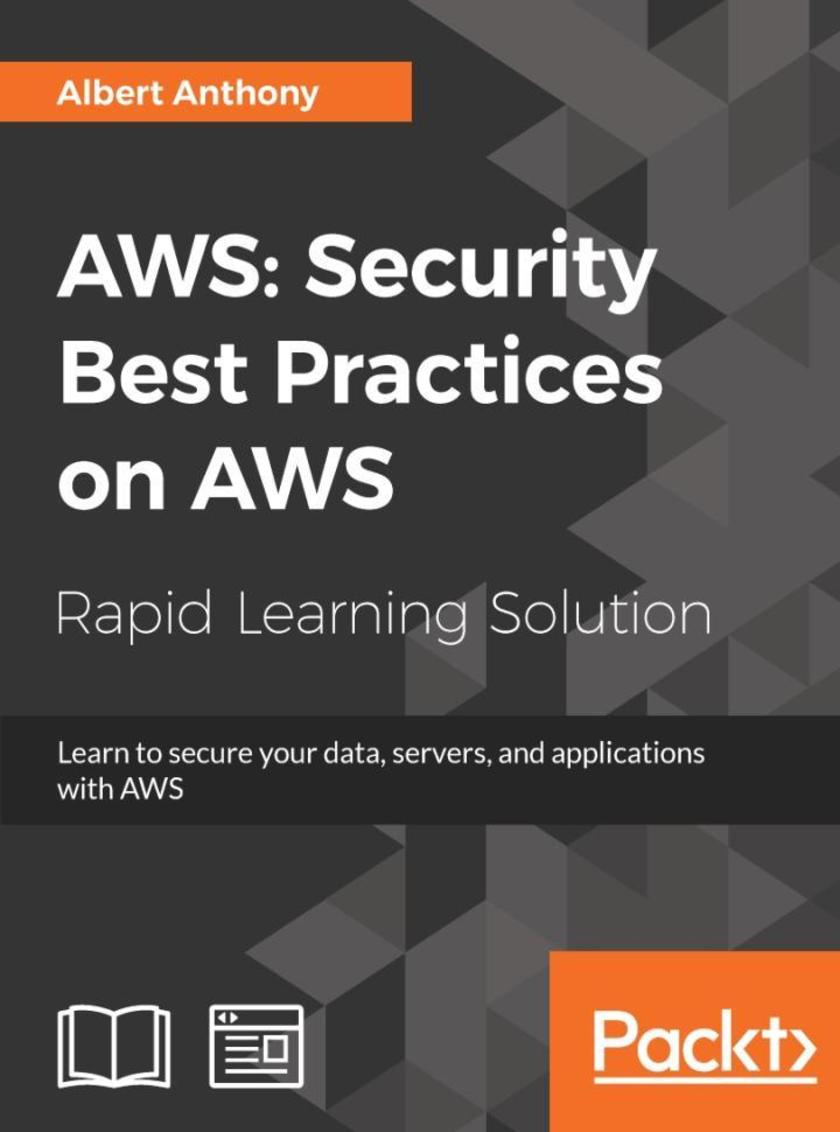
AWS: Security Best Practices on AWS
¥73.02
Delve deep into various security aspects of AWS to build and maintain a secured environment About This Book ? Learn to secure your network, infrastructure, data, and applications in AWS cloud ? Use AWS managed security services to automate security ? Dive deep into various aspects such as the security model, compliance, access management and much more to build and maintain a secured environment ? Explore Cloud Adoption Framework (CAF) and its components ? Embedded with assessments that will help you revise the concepts you have learned in this book Who This Book Is For This book is for all IT professionals, system administrators, security analysts, solution architects, and chief information security officers who are responsible for securing workloads in AWS for their organizations. What You Will Learn ? Get familiar with VPC components, features, and benefits ? Learn to create and secure your private network in AWS ? Explore encryption and decryption fundamentals ? Understand monitoring, logging, and auditing in AWS ? Ensure data security in AWS ? Secure your web and mobile applications in AWS ? Learn security best practices for IAM, VPC, shared security responsibility model, and so on In Detail With organizations moving their workloads, applications, and infrastructure to the cloud at an unprecedented pace, security of all these resources has been a paradigm shift for all those who are responsible for security; experts, novices, and apprentices alike. This book focuses on using native AWS security features and managed AWS services to help you achieve continuous security. Starting with an introduction to Virtual Private Cloud (VPC) to secure your AWS VPC, you will quickly explore various components that make up VPC such as subnets, security groups, various gateways, and many more. You will also learn to protect data in the AWS platform for various AWS services by encrypting and decrypting data in AWS. You will also learn to secure web and mobile applications in AWS cloud. This book is ideal for all IT professionals, system administrators, security analysts, solution architects, and chief information security officers who are responsible for securing workloads in AWS for their organizations. This book is embedded with useful assessments that will help you revise the concepts you have learned in this book. Style and approach This book follows a practical approach delving into different aspects of AWS security. It focuses on using native AWS security features and managed AWS services to help you achieve continuous security. Note: This book is a blend of text and quizzes, all packaged up keeping your journey in mind. It includes content from the following Packt product: ? Mastering AWS Security by Albert Anthony
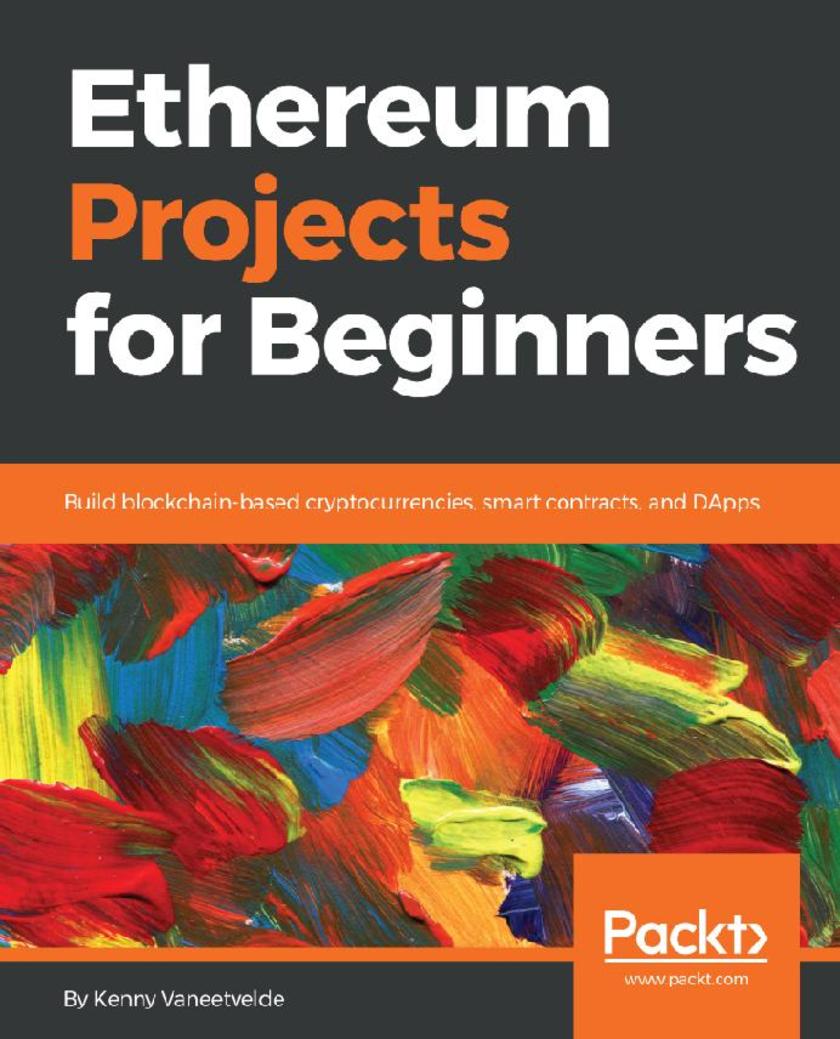
Ethereum Projects for Beginners
¥42.50
Understand the Ethereum platform to build distributed applications that are secured and decentralized using blockchain technology Key Features *Build your own decentralized applications using real-world blockchain examples *Implement Ethereum for building smart contracts and cryptocurrency applications with easy-to-follow projects *Enhance your application security with blockchain Book Description Ethereum enables the development of efficient, smart contracts that contain code. These smart contracts can interact with other smart contracts to make decisions, store data, and send Ether to others.Ethereum Projects for Beginners provides you with a clear introduction to creating cryptocurrencies, smart contracts, and decentralized applications. As you make your way through the book, you’ll get to grips with detailed step-by-step processes to build advanced Ethereum projects. Each project will teach you enough about Ethereum to be productive right away. You will learn how tokenization works, think in a decentralized way, and build blockchain-based distributed computing systems. Towards the end of the book, you will develop interesting Ethereum projects such as creating wallets and secure data sharing.By the end of this book, you will be able to tackle blockchain challenges by implementing end-to-end projects using the full power of the Ethereum blockchain. What you will learn *Develop your ideas fast and efficiently using the Ethereum blockchain *Make writing and deploying smart contracts easy and manageable *Work with private data in blockchain applications *Handle large files in blockchain applications *Ensure your decentralized applications are safe *Explore how Ethereum development frameworks work *Create your own cryptocurrency or token on the Ethereum blockchain *Make sure your cryptocurrency is ERC20-compliant to launch an ICO Who this book is for This book is for individuals who want to build decentralized applications using blockchain technology and the power of Ethereum from scratch. Some prior knowledge of JavaScript is required, since most examples use a web frontend.
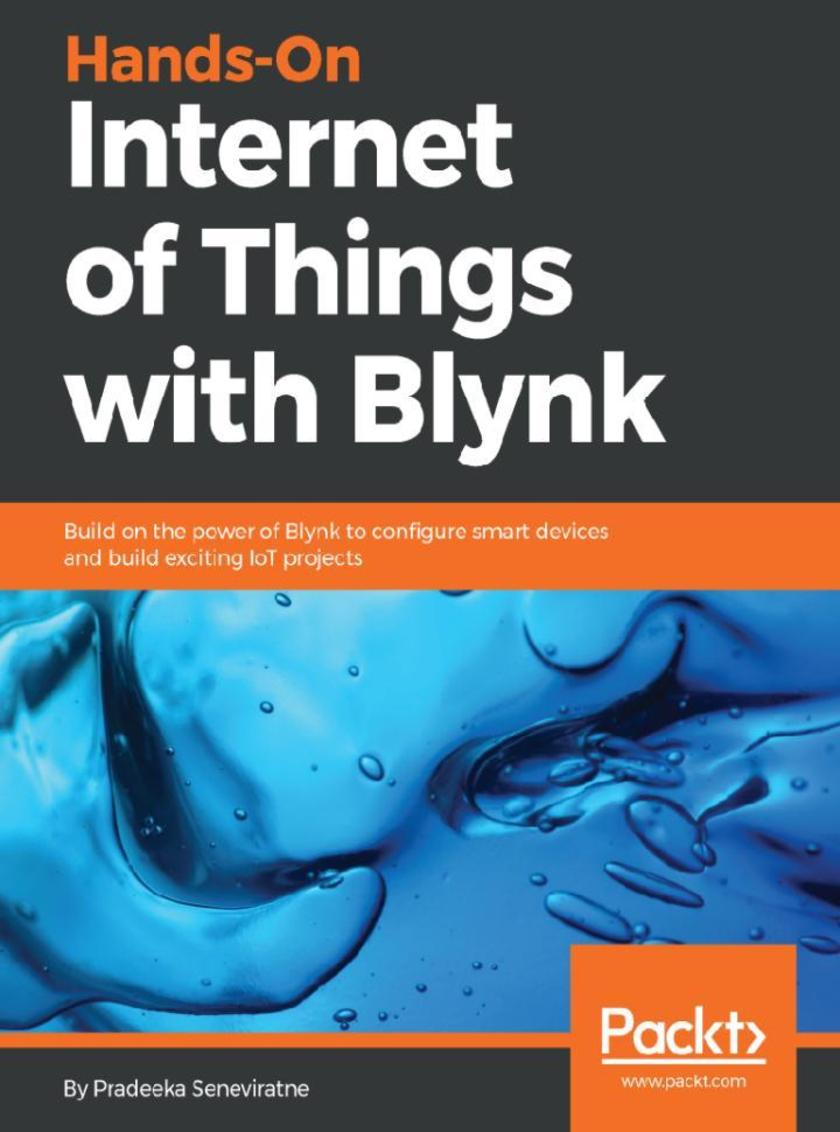
Hands-On Internet of Things with Blynk
¥63.21
Connect things to create amazing IoT applications in minutes About This Book ? Use Blynk cloud and Blynk server to connect devices ? Build IoT applications on Android and iOS platforms ? A practical guide that will show how to connect devices using Blynk and Raspberry Pi 3 Who This Book Is For This book is targeted at any stakeholder working in the IoT sector who wants to understand how Blynk works and build exciting IoT projects. Prior understanding of Raspberry Pi, C/C++, and electronics is a must. What You Will Learn ? Build devices using Raspberry Pi and various sensors and actuators ? Use Blynk cloud to connect and control devices through the Blynk app ? Connect devices to Blynk cloud and server through Ethernet and Wi-Fi ? Make applications using Blynk apps (App Builder) on Android and iOS platforms ? Run Blynk personal server on the Windows, MAC, and Raspberry Pi platforms In Detail Blynk, known as the most user-friendly IoT platform, provides a way to build mobile applications in minutes. With the Blynk drag-n-drop mobile app builder, anyone can build amazing IoT applications with minimal resources and effort, on hardware ranging from prototyping platforms such as Arduino and Raspberry Pi 3 to industrial-grade ESP8266, Intel, Sierra Wireless, Particle, Texas Instruments, and a few others. This book uses Raspberry Pi as the main hardware platform and C/C++ to write sketches to build projects. The first part of this book shows how to set up a development environment with various hardware combinations and required software. Then you will build your first IoT application with Blynk using various hardware combinations and connectivity types such as Ethernet and Wi-Fi. Then you'll use and configure various widgets (control, display, notification, interface, time input, and some advanced widgets) with Blynk App Builder to build applications. Towards the end, you will learn how to connect with and use built-in sensors on Android and iOS mobile devices. Finally you will learn how to build a robot that can be controlled with a Blynk app through the Blynk cloud and personal server. By the end of this book, you will have hands-on experience building IoT applications using Blynk. Style and approach A step-by-step guide that will help you build simple yet exciting project in no time.
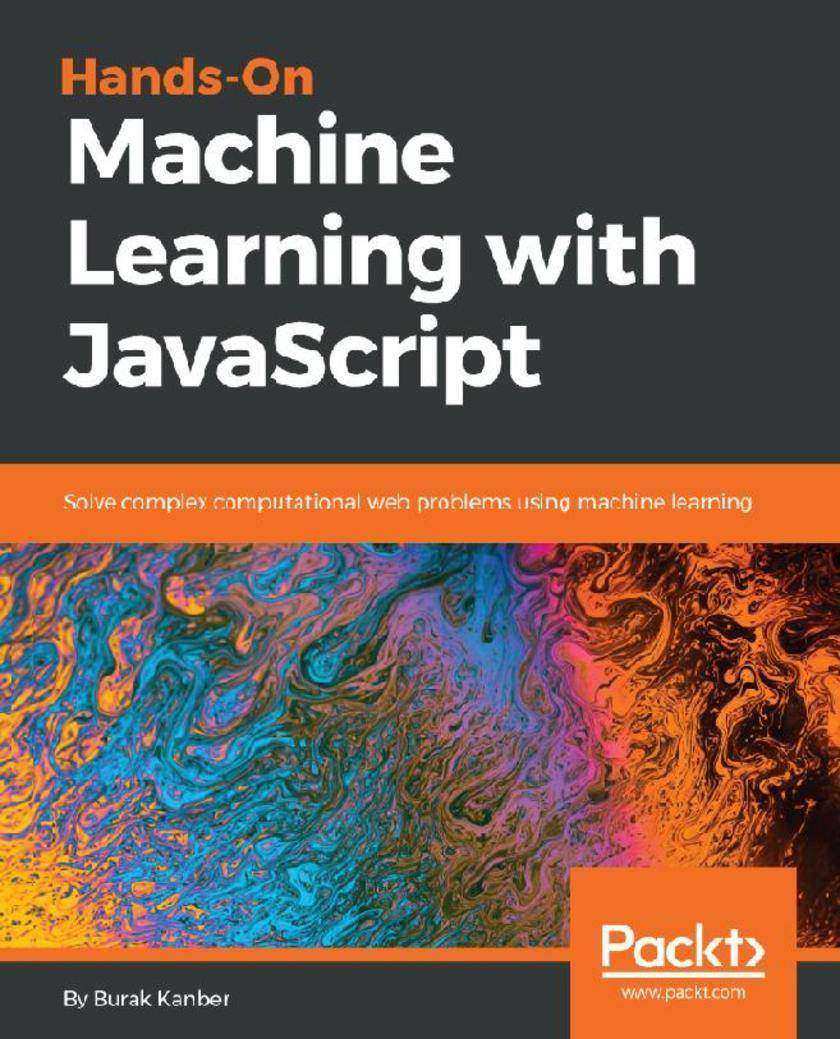
Hands-on Machine Learning with JavaScript
¥81.74
A definitive guide to creating an intelligent web application with the best of machine learning and JavaScript About This Book ? Solve complex computational problems in browser with JavaScript ? Teach your browser how to learn from rules using the power of machine learning ? Understand discoveries on web interface and API in machine learning Who This Book Is For This book is for you if you are a JavaScript developer who wants to implement machine learning to make applications smarter, gain insightful information from the data, and enter the field of machine learning without switching to another language. Working knowledge of JavaScript language is expected to get the most out of the book. What You Will Learn ? Get an overview of state-of-the-art machine learning ? Understand the pre-processing of data handling, cleaning, and preparation ? Learn Mining and Pattern Extraction with JavaScript ? Build your own model for classification, clustering, and prediction ? Identify the most appropriate model for each type of problem ? Apply machine learning techniques to real-world applications ? Learn how JavaScript can be a powerful language for machine learning In Detail In over 20 years of existence, JavaScript has been pushing beyond the boundaries of web evolution with proven existence on servers, embedded devices, Smart TVs, IoT, Smart Cars, and more. Today, with the added advantage of machine learning research and support for JS libraries, JavaScript makes your browsers smarter than ever with the ability to learn patterns and reproduce them to become a part of innovative products and applications. Hands-on Machine Learning with JavaScript presents various avenues of machine learning in a practical and objective way, and helps implement them using the JavaScript language. Predicting behaviors, analyzing feelings, grouping data, and building neural models are some of the skills you will build from this book. You will learn how to train your machine learning models and work with different kinds of data. During this journey, you will come across use cases such as face detection, spam filtering, recommendation systems, character recognition, and more. Moreover, you will learn how to work with deep neural networks and guide your applications to gain insights from data. By the end of this book, you'll have gained hands-on knowledge on evaluating and implementing the right model, along with choosing from different JS libraries, such as NaturalNode, brain, harthur, classifier, and many more to design smarter applications. Style and approach This is a practical tutorial that uses hands-on examples to step through some real-world applications of machine learning. Without shying away from the technical details, you will explore machine learning with JavaScript using clear and practical examples.
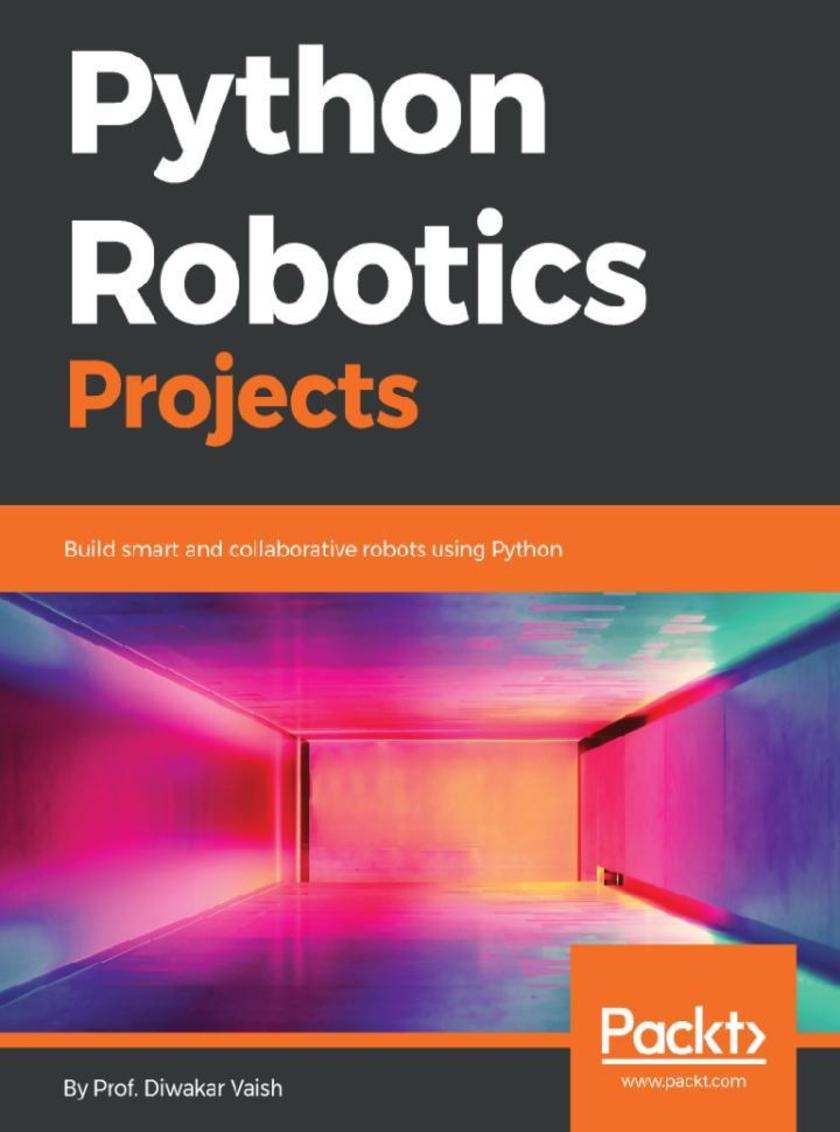
Python Robotics Projects
¥81.74
Leverage the power of Python to build DIY robotic projects About This Book ? Design, build, and stimulate collaborative robots ? Build high-end robotics projects such as a customized personal Jarvis ? Leverage the power of Python and ROS for DIY robotic projects Who This Book Is For If building robots is your dream, then this book is made for you. Prior knowledge of Python would be an added advantage. What You Will Learn ? Get to know the basics of robotics and its functions ? Walk through interface components with microcontrollers ? Integrate robotics with the IoT environment ? Build projects using machine learning ? Implement path planning and vision processing ? Interface your robots with Bluetooth In Detail Robotics is a fast-growing industry. Multiple surveys state that investment in the field has increased tenfold in the last 6 years, and is set to become a $100-billion sector by 2020. Robots are prevalent throughout all industries, and they are all set to be a part of our domestic lives. This book starts with the installation and basic steps in configuring a robotic controller. You'll then move on to setting up your environment to use Python with the robotic controller. You'll dive deep into building simple robotic projects, such as a pet-feeding robot, and more complicated projects, such as machine learning enabled home automation system (Jarvis), vision processing based robots and a self-driven robotic vehicle using Python. By the end of this book, you'll know how to build smart robots using Python. Style and approach A simple step-by-step guide to help you learn the concepts of robotics using simple to advanced steps. You’ll not only learn the concepts of AI, machine learning, and Vision Processing, but also how to practically implement them in your projects.

Learn PowerShell Core 6.0
¥78.47
Enhance your skills in expert module development, deployment, security, DevOps, and cloud Key Features *A step-by-step guide to get you started with PowerShell Core 6.0 *Harness the capabilities of PowerShell Core 6.0 to perform simple to complex administration tasks *Learn core administrative concepts such as scripting, pipelines, and DSC Book Description Beginning with an overview of the different versions of PowerShell, Learn PowerShell Core 6.0 introduces you to VSCode and then dives into helping you understand the basic techniques in PowerShell scripting. You will cover advanced coding techniques, learn how to write reusable code as well as store and load data with PowerShell. This book will help you understand PowerShell security and Just Enough Administration, enabling you to create your own PowerShell repository. The last set of chapters will guide you in setting up, configuring, and working with Release Pipelines in VSCode and VSTS, and help you understand PowerShell DSC. In addition to this, you will learn how to use PowerShell with Windows, Azure, Microsoft Online Services, SCCM, and SQL Server. The final chapter will provide you with some use cases and pro tips. By the end of this book, you will be able to create professional reusable code using security insight and knowledge of working with PowerShell Core 6.0 and its most important capabilities. What you will learn *Get to grips with Powershell Core 6.0 *Explore basic and advanced PowerShell scripting techniques *Get to grips with Windows PowerShell Security *Work with centralization and DevOps with PowerShell *Implement PowerShell in your organization through real-life examples *Learn to create GUIs and use DSC in production Who this book is for If you are a Windows administrator or a DevOps user who wants to leverage PowerShell to automate simple to complex tasks, then this book is for you. Whether you know nothing about PowerShell or just enough to get by, this guide will give you what you need to go to take your scripting to the next level. You’ll also find this book useful if you’re a PowerShell expert looking to expand your knowledge in areas such as PowerShell Security and DevOps.
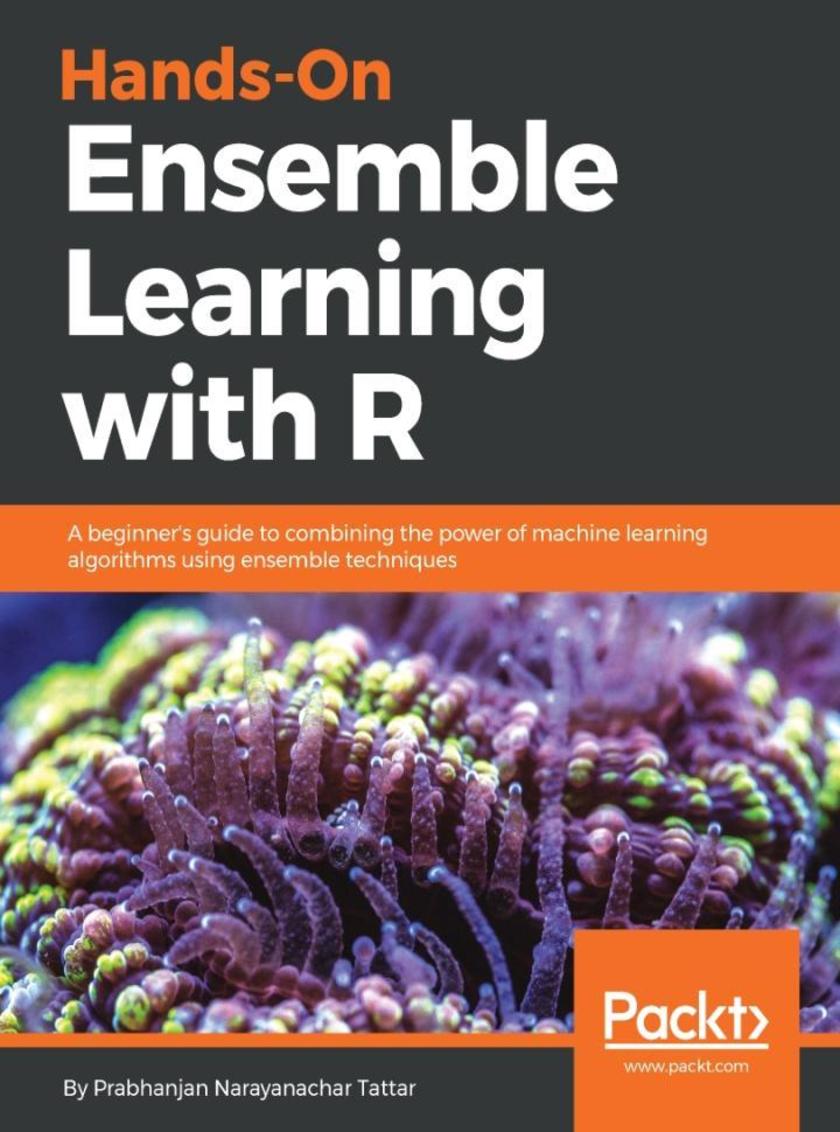
Hands-On Ensemble Learning with R
¥78.47
Explore powerful R packages to create predictive models using ensemble methods Key Features *Implement machine learning algorithms to build ensemble-efficient models *Explore powerful R packages to create predictive models using ensemble methods *Learn to build ensemble models on large datasets using a practical approach Book Description Ensemble techniques are used for combining two or more similar or dissimilar machine learning algorithms to create a stronger model. Such a model delivers superior prediction power and can give your datasets a boost in accuracy. Hands-On Ensemble Learning with R begins with the important statistical resampling methods. You will then walk through the central trilogy of ensemble techniques – bagging, random forest, and boosting – then you'll learn how they can be used to provide greater accuracy on large datasets using popular R packages. You will learn how to combine model predictions using different machine learning algorithms to build ensemble models. In addition to this, you will explore how to improve the performance of your ensemble models. By the end of this book, you will have learned how machine learning algorithms can be combined to reduce common problems and build simple efficient ensemble models with the help of real-world examples. What you will learn *Carry out an essential review of re-sampling methods, bootstrap, and jackknife *Explore the key ensemble methods: bagging, random forests, and boosting *Use multiple algorithms to make strong predictive models *Enjoy a comprehensive treatment of boosting methods *Supplement methods with statistical tests, such as ROC *Walk through data structures in classification, regression, survival, and time series data *Use the supplied R code to implement ensemble methods *Learn stacking method to combine heterogeneous machine learning models Who this book is for This book is for you if you are a data scientist or machine learning developer who wants to implement machine learning techniques by building ensemble models with the power of R. You will learn how to combine different machine learning algorithms to perform efficient data processing. Basic knowledge of machine learning techniques and programming knowledge of R would be an added advantage.
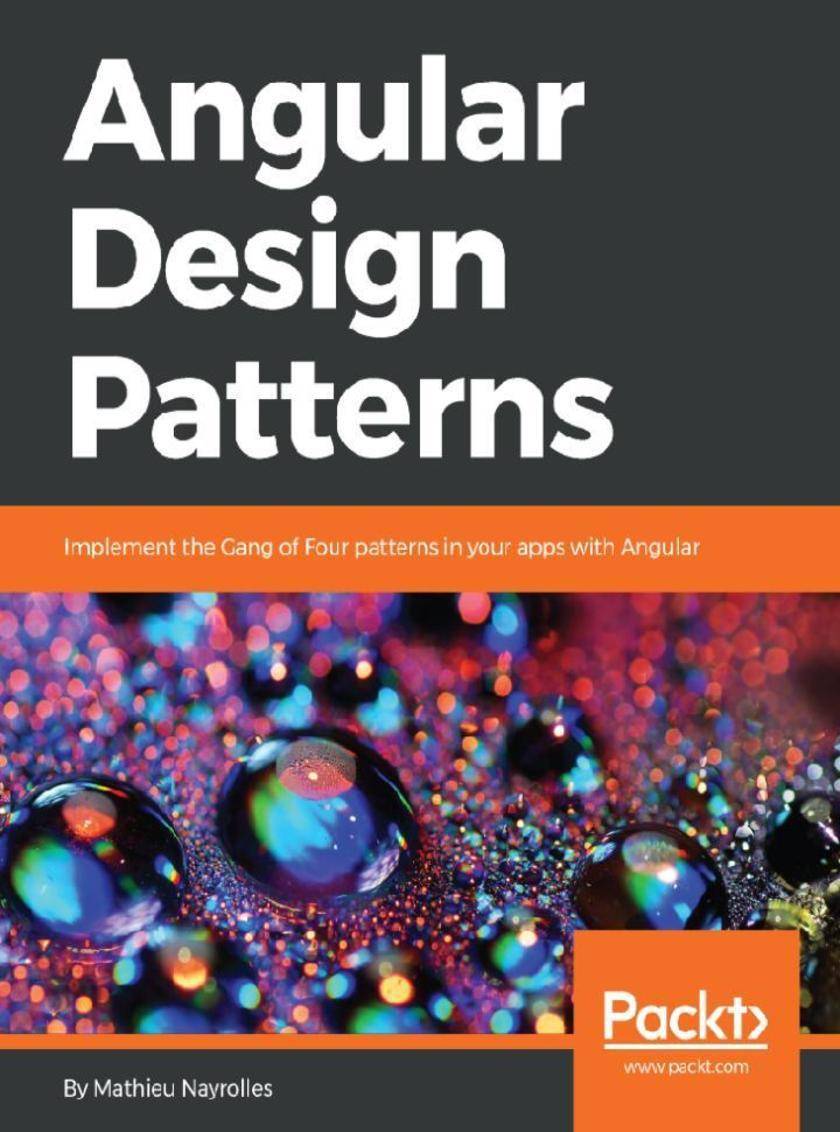
Angular Design Patterns
¥52.31
Make the most of Angular by leveraging design patterns and best practices to build stable and high performing apps Key Features *Get to grips with the benefits and applicability of using different design patterns in Angular with the help of real-world examples *Identify and prevent common problems, programming errors, and anti-patterns *Packed with easy-to-follow examples that can be used to create reusable code and extensible designs Book Description This book is an insightful journey through the most valuable design patterns, and it will provide clear guidance on how to use them effectively in Angular. You will explore some of the best ways to work with Angular and how to use it to meet the stability and performance required in today's web development world. You’ll get to know some Angular best practices to improve your productivity and the code base of your application. We will take you on a journey through Angular designs for the real world, using a combination of case studies, design patterns to follow, and anti-patterns to avoid. By the end of the book, you will understand the various features of Angular, and will be able to apply well-known, industry-proven design patterns in your work. What you will learn *Understand Angular design patterns and anti-patterns *Implement the most useful GoF patterns for Angular *Explore some of the most famous navigational patterns for Angular *Get to know and implement stability patterns *Explore and implement operations patterns *Explore the official best practices for Angular *Monitor and improve the performance of Angular applications Who this book is for If you want to increase your understanding of Angular and apply it to real-life application development, then this book is for you.

Building Serverless Python Web Services with Zappa
¥69.75
Master serverless architectures in Python and their implementation, with Zappa on three different frameworks. Key Features * Scalable serverless Python web services using Django, Flask, and Pyramid. * Learn Asynchronous task execution on AWS Lambda and scheduling using Zappa. * Implementing Zappa in a Docker container. Book Description Serverless applications are becoming very popular these days, not just because they save developers the trouble of managing the servers, but also because they provide several other benefits such as cutting heavy costs and improving the overall performance of the application. This book will help you build serverless applications in a quick and efficient way. We begin with an introduction to AWS and the API gateway, the environment for serverless development, and Zappa. We then look at building, testing, and deploying apps in AWS with three different frameworks--Flask, Django, and Pyramid. Setting up a custom domain along with SSL certificates and configuring them with Zappa is also covered. A few advanced Zappa settings are also covered along with securing Zappa with AWS VPC. By the end of the book you will have mastered using three frameworks to build robust and cost-efficient serverless apps in Python. What you will learn *Build, test, and deploy a simple web service using AWS CLI *Integrate Flask-based Python applications, via AWS CLI configuration *Design Rest APIs integrated with Zappa for Flask and Django *Create a project in the Pyramid framework and configure it with Zappa *Generate SSL Certificates using Amazon Certificate Manager *Configure custom domains with AWS Route 53 *Create a Docker container similar to AWS Lambda Who this book is for Python Developers who are interested in learning how to develop fast and highly scalable serverless applications in Python, will find this book useful
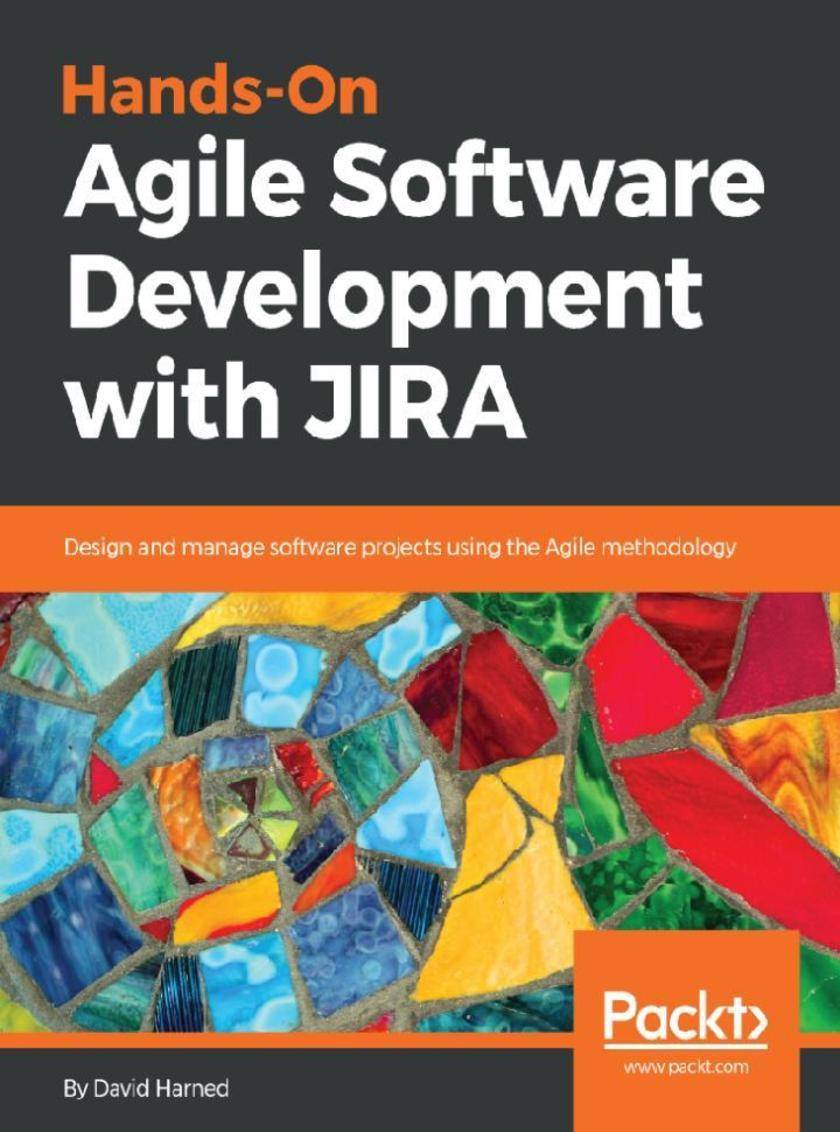
Hands-On Agile Software Development with JIRA
¥52.31
Plan, track, and release great software Key Features * Learn to create reports and dashboard for effective project management * Implement your development strategy in JIRA. * Practices to help you manage the issues in the development team Book Description As teams scale in size, project management can get very complicated. One of the best tools to deal with this kind of problem is JIRA. This book will start by organizing your project requirements and the principles of Agile development to get you started. You will then be introduced to set up a JIRA account and the JIRA ecosystem to help you implement a dashboard for your team's work and issues. You will learn how to manage any issues and bugs that might emerge in the development stage. Going ahead, the book will help you build reports and use them to plan the releases based on the study of the reports. Towards the end, you will come across working with the gathered data and create a dashboard that helps you track the project's development. What you will learn * Create your first project (and manage existing projects) in JIRA * Manage your board view and backlogs in JIRA * Run a Scrum Sprint project in JIRA * Create reports (including topic-based reports) * Forecast using versions * Search for issues with JIRA Query Language (JQL) * Execute bulk changes to issues * Create custom filters, dashboards, and widgets * Create epics, stories, bugs, and tasks Who this book is for This book is for administrators who wants to apply the Agile approach to managing the issues, bugs, and releases in their software development projects using JIRA.
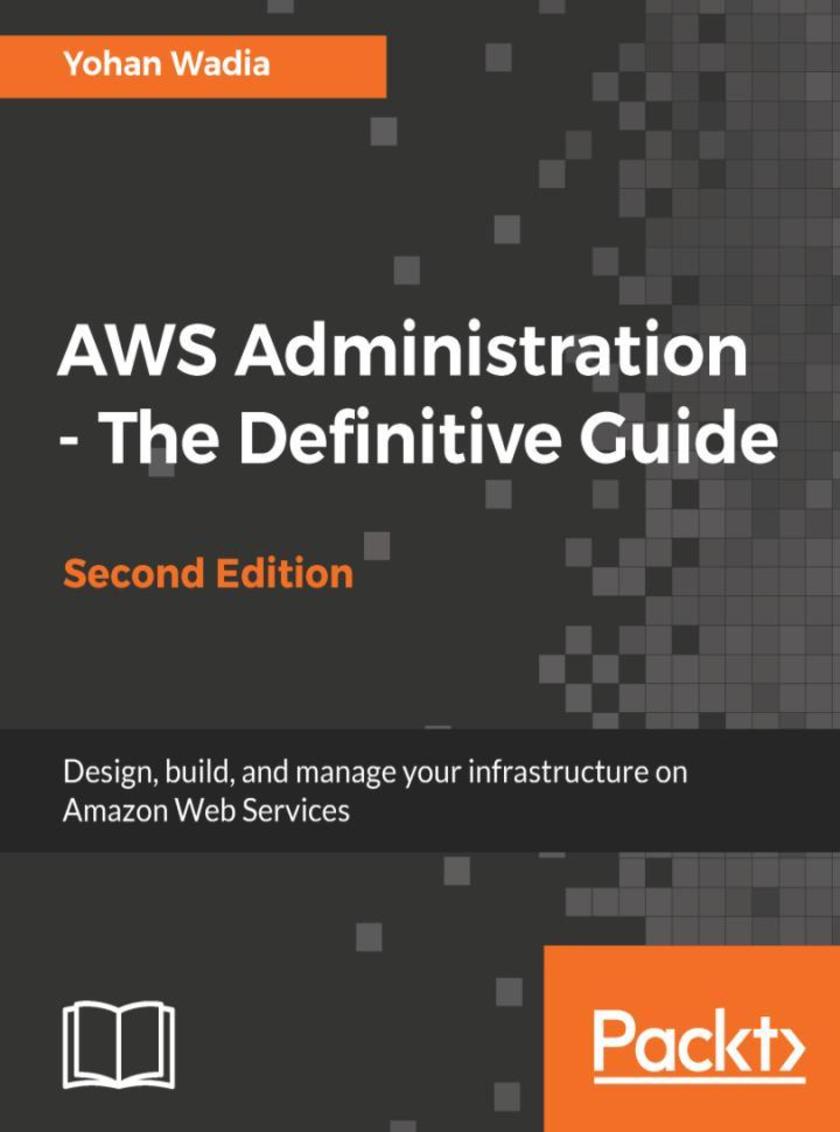
AWS Administration - The Definitive Guide - Second Edition
¥81.74
Leverage this step-by-step guide to build a highly secure, fault-tolerant, and scalable Cloud environment About This Book ? Learn how to leverage various Amazon Web Services (AWS) components and services to build a secure, reliable, and robust environment to host your applications on. ? Delve into core AWS service offerings with hands-on tutorials, real-world use case scenarios, and best practices. ? A self-paced, systematic, and step-by-step guide to learning and implementing AWS in your own environment. Who This Book Is For This book is for those who want to learn and leverage the rich plethora of services provided by AWS. Although no prior experience with AWS is required, it is recommended that you have some hands-on experience of Linux, Web Services, and basic networking. What You Will Learn ? Take an in-depth look at what's new with AWS, along with how to effectively manage and automate your EC2 infrastructure with AWS Systems Manager ? Deploy and scale your applications with ease using AWS Elastic Beanstalk and Amazon Elastic File System ? Secure and govern your environments using AWS CloudTrail, AWS Config, and AWS Shield ? Learn the DevOps way using a combination of AWS CodeCommit, AWS CodeDeploy, and AWS CodePipeline ? Run big data analytics and workloads using Amazon EMR and Amazon Redshift ? Learn to back up and safeguard your data using AWS Data Pipeline ? Get started with the Internet of Things using AWS IoT and AWS Greengrass In Detail Many businesses are moving from traditional data centers to AWS because of its reliability, vast service offerings, lower costs, and high rate of innovation. AWS can be used to accomplish a variety of both simple and tedious tasks. Whether you are a seasoned system admin or a rookie, this book will help you to learn all the skills you need to work with the AWS cloud. This book guides you through some of the most popular AWS services, such as EC2, Elastic Beanstalk, EFS, CloudTrail, Redshift, EMR, Data Pipeline, and IoT using a simple, real-world, application-hosting example. This book will also enhance your application delivery skills with the latest AWS services, such as CodeCommit, CodeDeploy, and CodePipeline, to provide continuous delivery and deployment, while also securing and monitoring your environment's workflow. Each chapter is designed to provide you with maximal information about each AWS service, coupled with easy to follow, hands-on steps, best practices, tips, and recommendations. By the end of the book, you will be able to create a highly secure, fault-tolerant, and scalable environment for your applications to run on. Style and approach This in-depth and insightful guide is filled with easy-to-follow examples, real-world use cases, best practices, and recommendations that will help you design and leverage some of the most commonly used AWS services.
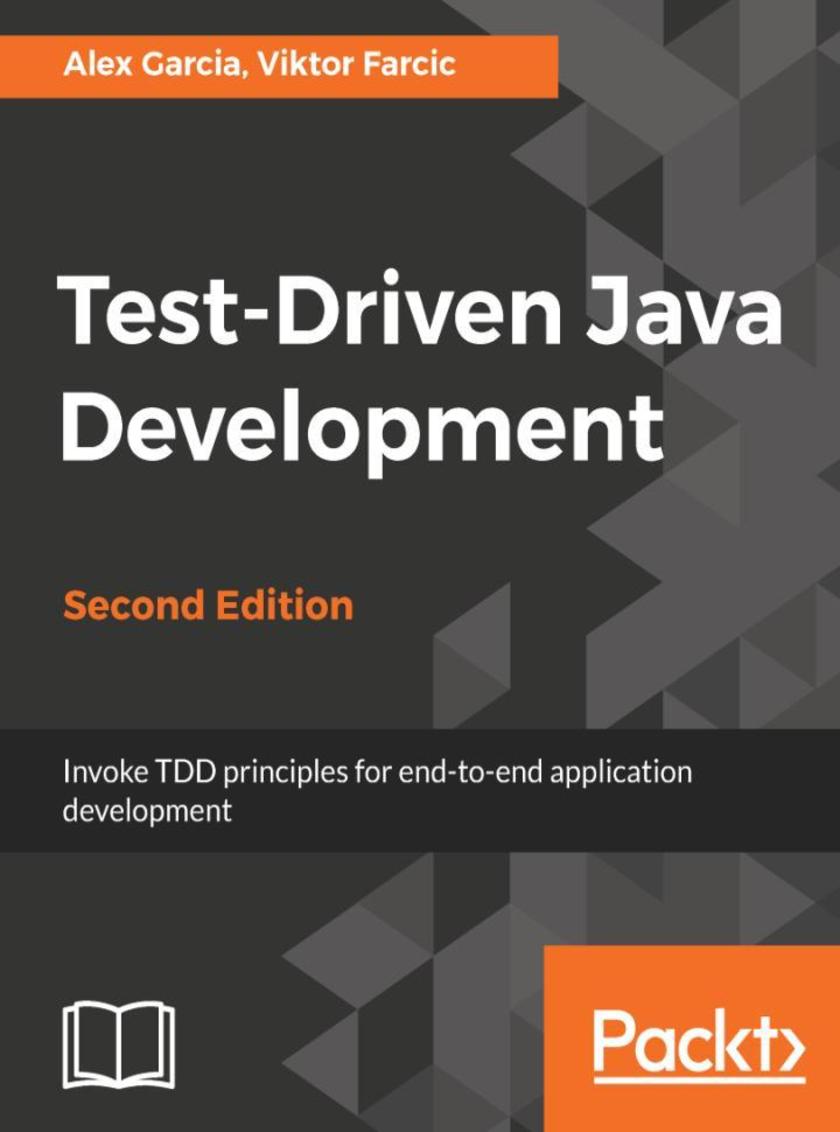
Test-Driven Java Development - Second Edition
¥90.46
This book will teach the concepts of test driven development in Java so you can build clean, maintainable and robust code About This Book ? Explore the most popular TDD tools and frameworks and become more proficient in building applications ? Create applications with better code design, fewer bugs, and higher test coverage, enabling you to get them to market quickly ? Implement test-driven programming methods into your development workflows Who This Book Is For If you're an experienced Java developer and want to implement more effective methods of programming systems and applications, then this book is for you. What You Will Learn ? Explore the tools and frameworks required for effective TDD development ? Perform the Red-Green-Refactor process efficiently, the pillar around which all other TDD procedures are based ? Master effective unit testing in isolation from the rest of your code ? Design simple and easily maintainable code by implementing different techniques ? Use mocking frameworks and techniques to easily write and quickly execute tests ? Develop an application to implement behavior-driven development in conjunction with unit testing ? Enable and disable features using feature toggles In Detail Test-driven development (TDD) is a development approach that relies on a test-first procedure that emphasizes writing a test before writing the necessary code, and then refactoring the code to optimize it.The value of performing TDD with Java, one of the longest established programming languages, is to improve the productivity of programmers and the maintainability and performance of code, and develop a deeper understanding of the language and how to employ it effectively. Starting with the basics of TDD and understanding why its adoption is beneficial, this book will take you from the first steps of TDD with Java until you are confident enough to embrace the practice in your day-to-day routine.You'll be guided through setting up tools, frameworks, and the environment you need, and we will dive right into hands-on exercises with the goal of mastering one practice, tool, or framework at a time. You'll learn about the Red-Green-Refactor procedure, how to write unit tests, and how to use them as executable documentation.With this book, you'll also discover how to design simple and easily maintainable code, work with mocks, utilize behavior-driven development, refactor old legacy code, and release a half-finished feature to production with feature toggles.You will finish this book with a deep understanding of the test-driven development methodology and the confidence to apply it to application programming with Java. Style and approach An easy-to-follow, hands-on guide to building applications through effective coding practices. This book covers practical examples by introducing different problems, each one designed as a learning exercise to help you understand each aspect of TDD.

Building RESTful Web Services with Java EE 8
¥52.31
Architect and design data-intensive applications and, in the process, learn how to collect, process, store, govern, and expose data for a variety of use cases Key Features *Integrate the data-intensive approach into your application architecture *Create a robust application layout with effective messaging and data querying architecture *Enable smooth data flow and make the data of your application intensive and fast Book Description Are you an architect or a developer who looks at your own applications gingerly while browsing through Facebook and applauding it silently for its data-intensive, yet ?uent and efficient, behaviour? This book is your gateway to build smart data-intensive systems by incorporating the core data-intensive architectural principles, patterns, and techniques directly into your application architecture. This book starts by taking you through the primary design challenges involved with architecting data-intensive applications. You will learn how to implement data curation and data dissemination, depending on the volume of your data. You will then implement your application architecture one step at a time. You will get to grips with implementing the correct message delivery protocols and creating a data layer that doesn’t fail when running high traffic. This book will show you how you can divide your application into layers, each of which adheres to the single responsibility principle. By the end of this book, you will learn to streamline your thoughts and make the right choice in terms of technologies and architectural principles based on the problem at hand. What you will learn *Understand how to envision a data-intensive system *Identify and compare the non-functional requirements of a data collection component *Understand patterns involving data processing, as well as technologies that help to speed up the development of data processing systems *Understand how to implement Data Governance policies at design time using various Open Source Tools *Recognize the anti-patterns to avoid while designing a data store for applications *Understand the different data dissemination technologies available to query the data in an efficient manner *Implement a simple data governance policy that can be extended using Apache Falcon Who this book is for This book is for developers and data architects who have to code, test, deploy, and/or maintain large-scale, high data volume applications. It is also useful for system architects who need to understand various non-functional aspects revolving around Data Intensive Systems.
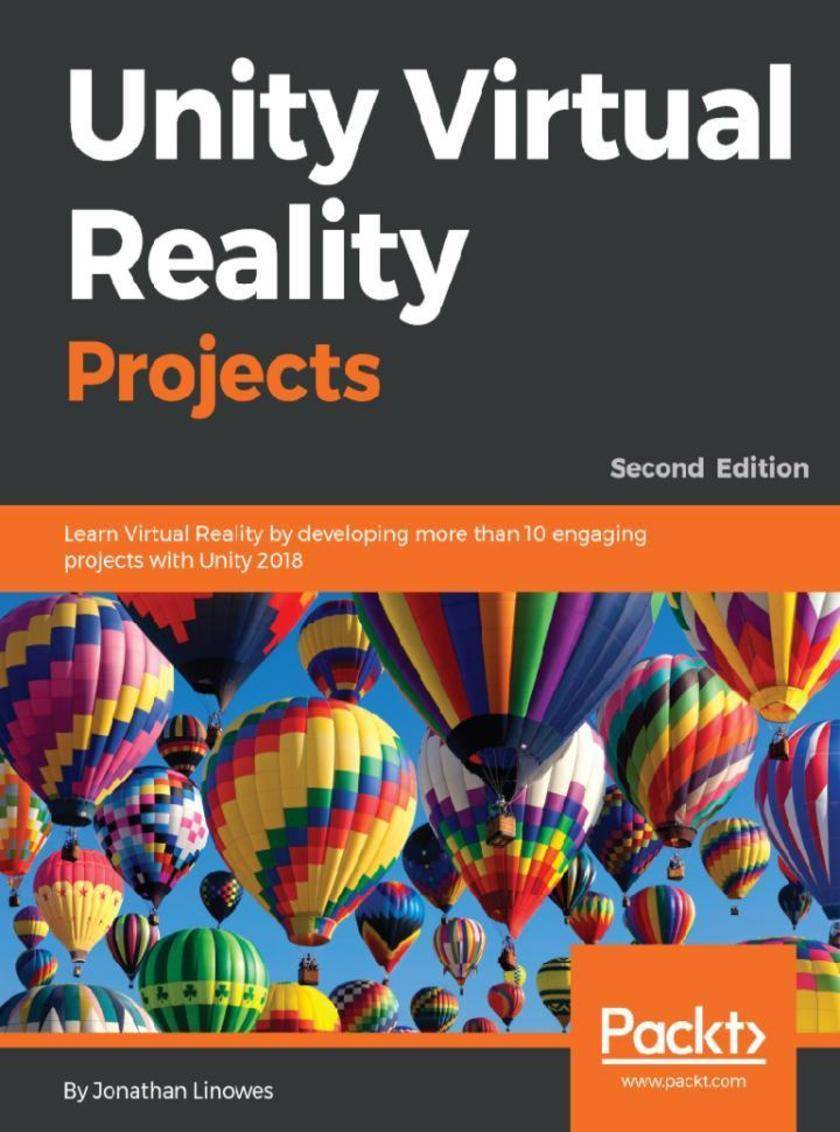
Unity Virtual Reality Projects
¥90.46
Explore the latest features of Unity 2018 to create immersive VR projects for Oculus Rift, HTC Vive, Daydream and Gear VR About This Book ? A project-based guide to teach you how to develop immersive and fun VR applications using Unity 3D ? Build experiences with interactable objects, physics, UI, animations, C# scripting, and other Unity features ? Explore the world of VR by building experiences such as diorama, first-person characters, 360-degree projections, social VR, audio fireball game, and VR storytelling Who This Book Is For If you're a non-programmer unfamiliar with 3D computer graphics, or experienced in both but new to virtual reality, and are interested in building your own VR games or applications, then this book is for you. Any experience in Unity is an advantage. What You Will Learn ? Create 3D scenes with Unity and other 3D tools while learning about world space and scale ? Build and run VR applications for specific headsets, including Oculus, Vive, and Daydream ? Interact with virtual objects using eye gaze, hand controllers, and user input events ? Move around your VR scenes using locomotion and teleportation ? Implement an audio fireball game using physics and particle systems ? Implement an art gallery tour with teleportation and data info ? Design and build a VR storytelling animation with a soundtrack and timelines ? Create social VR experiences with Unity networking In Detail Unity has become the leading platform for building virtual reality games, applications, and experiences for this new generation of consumer VR devices. Unity Virtual Reality Projects walks you through a series of hands-on tutorials and in-depth discussions on using the Unity game engine. With its practical and project-based approach, this book will get you up to speed with the specifics of Virtual Reality development in Unity. You will learn how to use Unity to develop VR applications that can be experienced with devices such as Oculus, Daydream, and Vive. Among the many topics and projects, you will explore gaze-based versus hand controller input, world space UI canvases, locomotion and teleportation, software design patterns, 360-degree media, timeline animation, and multiplayer networking. You will learn the Unity 3D game engine via the interactive Unity Editor as well as C# programming. By the end of the book, you will be fully equipped to develop rich, interactive virtual reality experiences using Unity. Style and approach A practical step-by-step guide to building impressive VR experiences with Unity 2018.
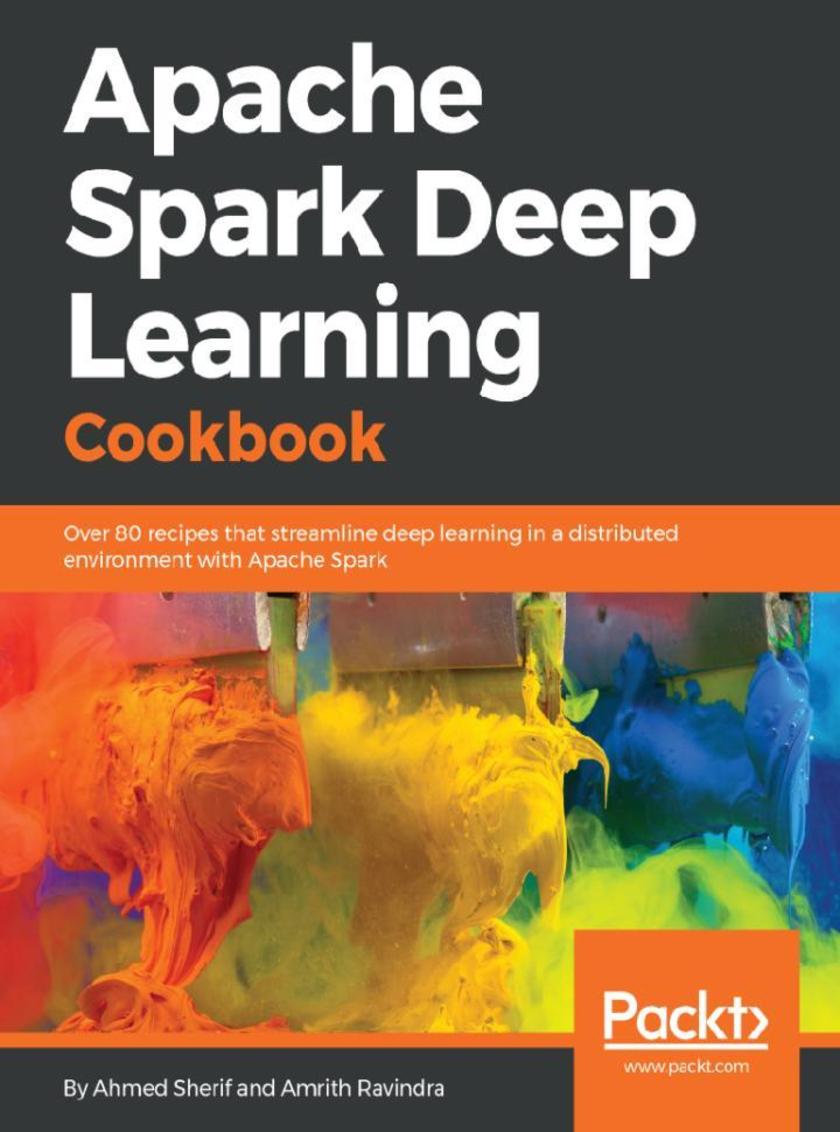
Apache Spark Deep Learning Cookbook
¥82.83
A solution-based guide to put your deep learning models into production with the power of Apache Spark Key Features * Discover practical recipes for distributed deep learning with Apache Spark * Learn to use libraries such as Keras and TensorFlow * Solve problems in order to train your deep learning models on Apache Spark Book Description With deep learning gaining rapid mainstream adoption in modern-day industries, organizations are looking for ways to unite popular big data tools with highly efficient deep learning libraries. As a result, this will help deep learning models train with higher efficiency and speed. With the help of the Apache Spark Deep Learning Cookbook, you’ll work through specific recipes to generate outcomes for deep learning algorithms, without getting bogged down in theory. From setting up Apache Spark for deep learning to implementing types of neural net, this book tackles both common and not so common problems to perform deep learning on a distributed environment. In addition to this, you’ll get access to deep learning code within Spark that can be reused to answer similar problems or tweaked to answer slightly different problems. You will also learn how to stream and cluster your data with Spark. Once you have got to grips with the basics, you’ll explore how to implement and deploy deep learning models, such as Convolutional Neural Networks (CNN) and Recurrent Neural Networks (RNN) in Spark, using popular libraries such as TensorFlow and Keras. By the end of the book, you'll have the expertise to train and deploy efficient deep learning models on Apache Spark. What you will learn * Set up a fully functional Spark environment * Understand practical machine learning and deep learning concepts * Apply built-in machine learning libraries within Spark * Explore libraries that are compatible with TensorFlow and Keras * Explore NLP models such as Word2vec and TF-IDF on Spark * Organize dataframes for deep learning evaluation * Apply testing and training modeling to ensure accuracy * Access readily available code that may be reusable Who this book is for If you’re looking for a practical and highly useful resource for implementing efficiently distributed deep learning models with Apache Spark, then the Apache Spark Deep Learning Cookbook is for you. Knowledge of the core machine learning concepts and a basic understanding of the Apache Spark framework is required to get the best out of this book. Additionally, some programming knowledge in Python is a plus.
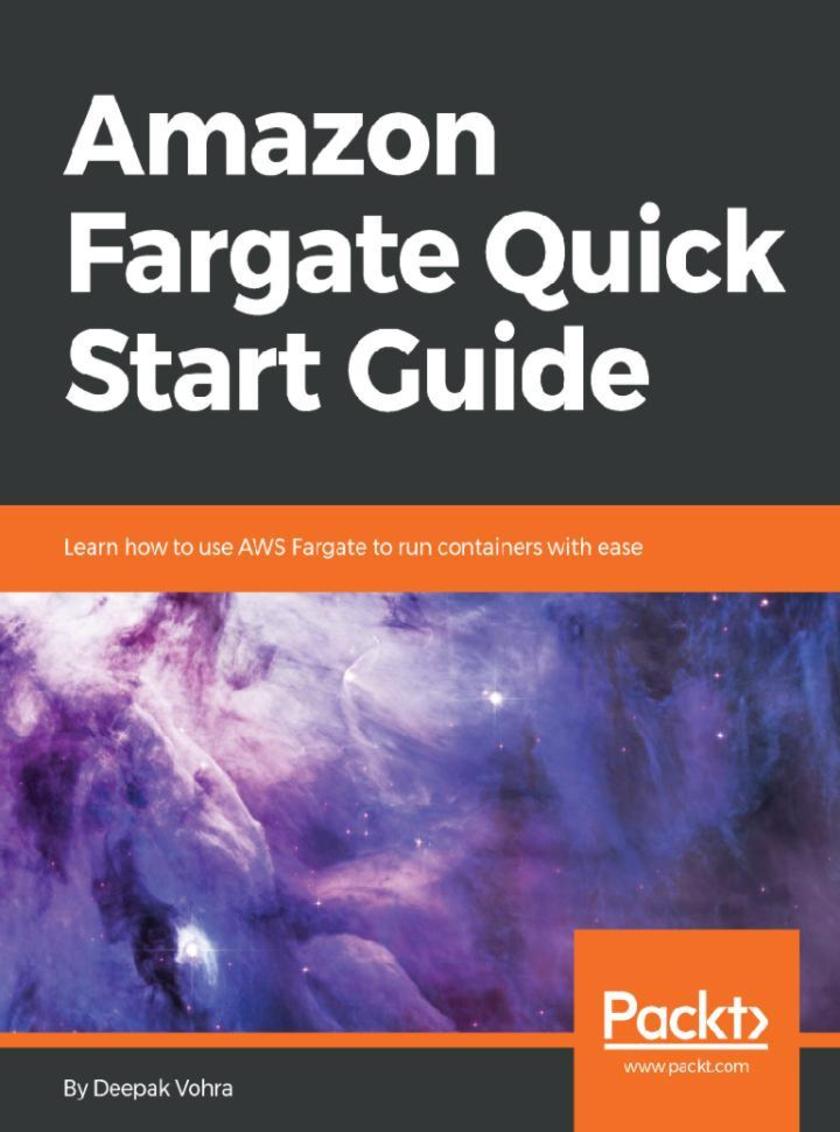
Amazon Fargate Quick Start Guide
¥52.31
This book gets you started and gives you knowledge about AWS Fargate in order to successfully incorporate it in your ECS container application. Key Features *Gives you a quick walk-through over the Amazon Elastic Container Services (ECS) *Provides an in depth knowledge of the components that Amazon Fargate has to offer. *Learn the practical aspects of Docker application development with a managed service Book Description Amazon Fargate is new launch type for the Amazon Elastic Container Service (ECS). ECS is an AWS service for Docker container orchestration. Docker is the de facto containerization framework and has revolutionized packaging and deployment of software. The introduction of Fargate has made the ECS platform serverless. The book takes you through how Amazon Fargate runs ECS services composed of tasks and Docker containers and exposes the containers to the user. Fargate has simplified the ECS platform. We will learn how Fargate creates an Elastic Network Interface (ENI) for each task and how auto scaling can be enabled for ECS tasks. You will also learn about using an IAM policy to download Docker images and send logs to CloudWatch. Finally, by the end of this book, you will have learned about how to use ECS CLI to create an ECS cluster and deploy tasks with Docker Compose. What you will learn *Running Docker containers with a managed service *Use Amazon ECS in Fargate launch mode *Configure CloudWatch Logging with Fargate *Use an IAM Role with Fargate *Understand how ECS CLI is used with Fargate *Learn how to use an Application Load Balancer with Fargate *Learn about Auto Scaling with Fargate Who this book is for This book is for Docker users and developers who want to learn about the Fargate platform. Typical job roles for which the book is suitable are DevOps Architect, Docker Engineer, and AWS Cloud Engineer. Prior knowledge of AWS and ECS is helpful but not mandatory.

Managing Mission - Critical Domains and DNS
¥81.74
This book will give you an all encompassing view of the domain name ecosystem combined with a comprehensive set of operations strategies. About This Book ? Manage infrastructure, risk, and management of DNS name servers. Get hands-on with factors like types of name servers, DNS queries and and so on. ? Practical guide for system administrators to manage mission-critical servers ? Based on real-world experience - Written by an industry veteran who has made every possible mistake within this field. Who This Book Is For Ideal for sysadmins, webmasters, IT consultants, and developers-anyone responsible for maintaining your organization's core DNS What You Will Learn ? Anatomy of a domain - how a domain is the sum of both its DNS zone and its registration data, and why that matters. ? The domain name ecosystem - the role of registries, registrars and oversight bodies and their effect on your names. ? How DNS queries work - queries and responses are examined including debugging techniques to zero in on problems. ? Nameserver considerations - alternative nameserver daemons, numbering considerations, and deployment architectures. ? DNS use cases - the right way for basic operations such as domain transfers, large scale migrations, GeoDNS, Anycast DNS. ? Securing your domains - All aspects of security from registrar vendor selection, to DNSSEC and DDOS mitigation strategies. In Detail Managing your organization's naming architecture and mitigating risks within complex naming environments is very important. This book will go beyond looking at “how to run a name server” or “how to DNSSEC sign a domain”, Managing Mission Critical Domains & DNS looks across the entire spectrum of naming; from external factors that exert influence on your domains to all the internal factors to consider when operating your DNS. The readers are taken on a comprehensive guided tour through the world of naming: from understanding the role of registrars and how they interact with registries, to what exactly is it that ICANN does anyway? Once the prerequisite knowledge of the domain name ecosystem is acquired, the readers are taken through all aspects of DNS operations. Whether your organization operates its own nameservers or utilizes an outsourced vendor, or both, we examine the complex web of interlocking factors that must be taken into account but are too frequently overlooked. By the end of this book, our readers will have an end to end to understanding of all the aspects covered in DNS name servers. Style and approach The book is divided into two parts, the first part looks at the wider domain name ecosystem: registries, registrars and oversight policies. The second and larger part goes into operations. Every aspect of naming is considered from the viewpoint of how this affects ones domains, what are the ramifications of different operating methods as portfolios scale.

Python GUI Programming with Tkinter
¥81.74
Find out how to create visually stunning and feature-rich applications by empowering Python's built-in Tkinter GUI toolkit About This Book ? Explore Tkinter's powerful features to easily design and customize your GUI application ? Learn the basics of 2D and 3D animation in GUI applications. ? Learn to integrate stunning Data Visualizations using Tkinter Canvas and Matplotlib. Who This Book Is For This book will appeal to developers and programmers who would like to build GUI-based applications. Knowledge of Python is a prerequisite. What You Will Learn ? Implement the tools provided by Tkinter to design beautiful GUIs ? Discover cross-platform development through minor customizations in your existing application ? Visualize graphs in real time as data comes in using Tkinter's animation capabilities ? Use PostgreSQL authentication to ensure data security for your application ? Write unit tests to avoid regressions when updating code In Detail Tkinter is a lightweight, portable, and easy-to-use graphical toolkit available in the Python Standard Library, widely used to build Python GUIs due to its simplicity and availability. This book teaches you to design and build graphical user interfaces that are functional, appealing, and user-friendly using the powerful combination of Python and Tkinter. After being introduced to Tkinter, you will be guided step-by-step through the application development process. Over the course of the book, your application will evolve from a simple data-entry form to a complex data management and visualization tool while maintaining a clean and robust design. In addition to building the GUI, you'll learn how to connect to external databases and network resources, test your code to avoid errors, and maximize performance using asynchronous programming. You'll make the most of Tkinter's cross-platform availability by learning how to maintain compatibility, mimic platform-native look and feel, and build executables for deployment across popular computing platforms. By the end of this book, you will have the skills and confidence to design and build powerful high-end GUI applications to solve real-world problems. Style and approach This is a comprehensive guide that explores the essential Tkinter features and modules and implements them in building real-world cross-platform GUI applications
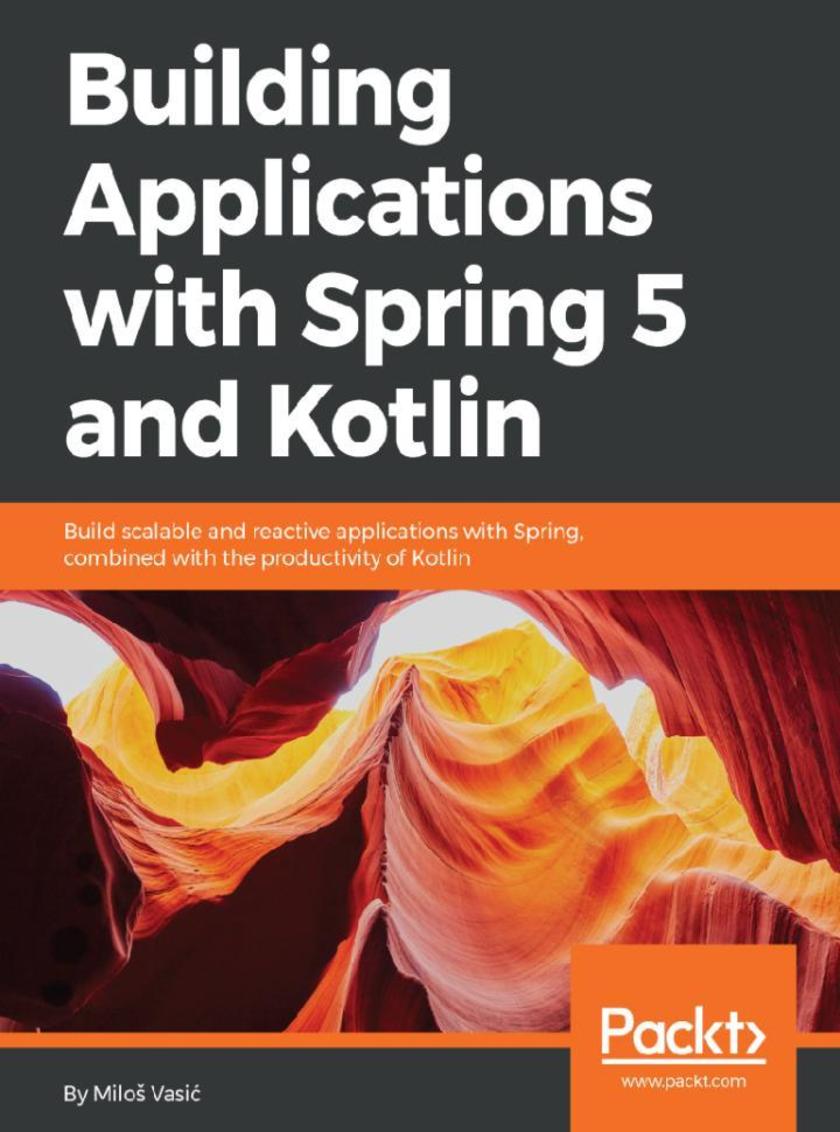
Building Applications with Spring 5 and Kotlin
¥81.74
Learn to build a full-fledged application in Spring and Kotlin taking a reactive, microservice-based approach for scalability and robustness in the cloud About This Book ? Build a full-fledged application in Spring and Kotlin ? Architect your application to take a microservice-based approach in the cloud ? Integrate your application with a variety of Spring components Who This Book Is For Developers comfortable using Spring who have basic knowledge of Kotlin and want to take their development skills to the next level and build enterprise-grade applications will benefit from this book. What You Will Learn ? Explore Spring 5 concepts with Kotlin ? Learn both dependency injections and complex configurations ? Utilize Spring Data, Spring Cloud, and Spring Security in your applications ? Create efficient reactive systems with Project Reactor ? Write unit tests for your Spring/Kotlin applications ? Deploy applications on cloud platforms like AWS In Detail Kotlin is being used widely by developers because of its light weight, built-in null safety, and functional and reactive programming aspects. Kotlin shares the same pragmatic, innovative and opinionated mindset as Spring, so they work well together. Spring when combined with Kotlin helps you to reach a new level of productivity. This combination has helped developers to create Functional Applications using both the tools together. This book will teach you how to take advantage of these developments and build robust, scalable and reactive applications with ease. In this book, you will begin with an introduction to Spring and its setup with Kotlin. You will then dive into assessing the design considerations of your application. Then you will learn to use Spring (with Spring Boot) along with Kotlin to build a robust backend in a microservice architecture with a REST based collaboration, and leverage Project Reactor in your application. You’ll then learn how to integrate Spring Data and Spring Cloud to manage configurations for database interaction and cloud deployment. You’ll also learn to use Spring Security to beef up security of your application before testing it with the JUnit framework and then deploying it on a cloud platform like AWS. Style and approach Everything you learn will be demonstrated on real-world Spring project. In each chapter we will cover some of Spring features and apply it on our project. We will guide you from the project initialization till the project deployment.




 购物车
购物车 个人中心
个人中心



